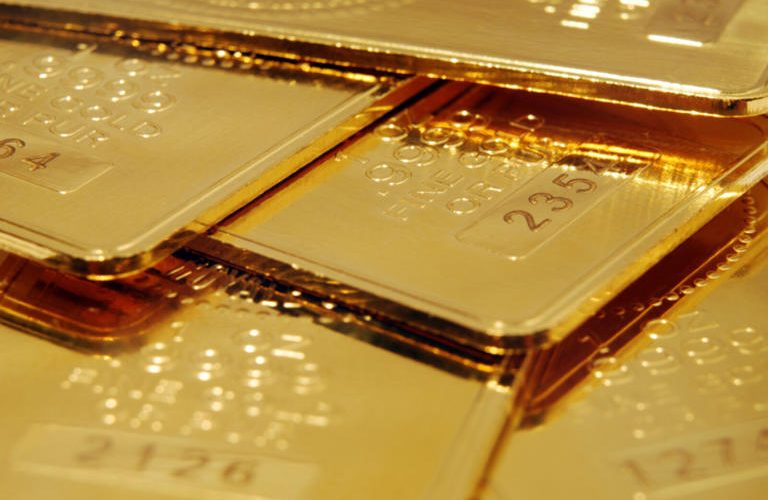Gold mining companies may be the healthiest they have been in years. At the same time, their valuations are lower than they have been historically, perhaps making now a good time for investors interested in hedging against inflation to buy gold stocks.
During the last major gold bull run – which culminated in the precious metal hitting what was then a record above $1,900 per ounce in 2011 – mining companies enjoying high valuation multiples let costs get out of control, made poor acquisitions and essentially grew for the sake of growth. The market punished them and for much of the past decade, these miners have been out of favor.
It seems that gold mining executives learned their lessons. Generally, their companies now have healthy balance sheets and have been more measured in their acquisitions, making better earnings more likely.
Even with recent cost increases from inflation, the capital needed to sustain current mining operations – “all-in sustaining costs” in mining investor parlance, referring to a widely used metric to gauge margins – is averaging $1,200 for senior and mid-tier miners, according to estimates by fund manager VanEck. That’s well above the current gold price of about $1,700 and has enabled strong cash flow that has resulted in dividends and share repurchases.
“The sector of today is a completely different sector,” says Imaru Casanova, deputy portfolio manager for gold and precious metals strategy at VanEck. Still, gold miners are trading at historically low multiples comparing price to net asset value or cash flow as investors want to see whether the miners can consistently deliver on production and cost guidance to show that a transformed gold sector is here for the long run.
Also, miners have been facing short-term head winds as gold has receded from prices of more than $2,000 per ounce. The Federal Reserve’s campaign against inflation has resulted in higher interest rates, making safe-haven Treasury bonds more attractive compared to non-interest-bearing gold. Strength in the U.S. dollar has also pressured gold by making the dollar-denominated precious metal more expensive for those holding other currencies, dampening some demand.
Owning Gold vs. Gold Mining Stocks
Before delving into individual companies, it’s worth mentioning that while the performance of gold mining stocks is certainly influenced by the price of the metal they produce, there are key differences in owning miners versus gold itself. “The biggest difference is that gold miners represent a real business with cash flows,” says Robert Johnson, finance professor at Creighton University.
From those cash flows, they can fund dividends or share buybacks. Gold miners’ stocks can also outperform the price of gold as the metal rises in value because operating and financial leverage lead to a higher percentage of increased free cash flow.
But there are also risks in owning mining stocks that there aren’t with physical gold. For one thing, mines might not produce as much gold as expected.
“There is management risk, in which decisions can be made that sometimes lead to bankruptcy and a worthless investment,” says William Stack, financial advisor at Stack Financial Services. “Fuel costs also impact the profitability and stock price, and it is doubtful we will see energy costs dropping any meaningful way in the years ahead.”
Investors often buy gold itself as a portfolio diversifier, as the metal’s price tends to have low correlation with the broad equity market. “Gold miners, however, tend to have much higher correlations with equity indexes and provide less diversification benefit than gold itself for investors,” Johnson says.
Gold is seen as a safe-haven investment in times of stock market or geopolitical turmoil. And it can act as a hedge against declines in the U.S. dollar as a cheaper dollar can boost demand for gold by making it cheaper for buyers using other currencies. That can mean that gold mining stocks also do better than other equities in times of inflation.
“Our research shows that gold mining stocks do provide an inflation hedge,” Johnson says. “That is, higher inflation tends to be accompanied by higher gold mining stock returns.”
If the stock market declines continue to far outpace those of gold, John Feneck, president of commodity-focused consultancy Feneck Consulting, predicts there will be a sector rotation away from the growth and momentum stocks that have done so well in recent years and “a flight to safety” into more conservative investments like value stocks, mining equities and precious metals.
With the combination of strong company fundamentals, low valuations and still historically high gold prices, now may be a good time to consider investing in these seven gold companies:
- Newmont Corp. (ticker: NEM)
- Barrick Gold Corp. (GOLD)
- Agnico Eagle Mines Ltd. (AEM)
- Endeavour Mining PLC (EDVMF)
- K92 Mining Inc. (KNTNF)
- Golden Minerals Co. (AUMN)
- Franco-Nevada Corp. (FNV)
Newmont Corp. (NEM)
Newmont is the biggest gold mining company by both production and stock market valuation. The company’s size gives it an advantage when procuring equipment or services and allows for synergies between operations. It also has a lot of financial firepower to expand by exploring its own mines or buying up those of other companies.
But quality is important as well as size, and Casanova says the gold mining industry has gotten to the point where miners aren’t considered good just because they are large. “They’re good because they can create value,” she says. So far this year through July 15, Newmont has lost about 11.8% compared with the S&P 500‘s 18.9% slide.
In the first quarter, the company’s all-in sustaining cost was $1,156 per ounce of gold. It produced 1.34 million ounces of the precious metal and reported adjusted net income of $546 million on revenues of $3 billion.
Raw HTML : TradingView – NEM
Barrick Gold Corp. (GOLD)
As the world’s No. 2 gold miner, Barrick has also outperformed the market so far this year, but not by as much as Newmont. Barrick was down 17.6% as of July 15. Like Newmont, Casanova says Barrick has consistently added value for shareholders by improving its portfolio of mines, its margins and its share metrics over the years.
In the first quarter, the company’s all-in sustaining cost was $1,164 per ounce of gold, it produced 990,000 ounces of the precious metal and reported adjusted net earnings of $463 million on revenues of $2.85 billion.
Raw HTML : TradeView – GOLD
Agnico Eagle Mines Ltd. (AEM)
This gold miner has historically traded at a premium valuation and is a good example of the improvement in the whole gold mining industry, Casanova says. “It has earned that premium valuation by delivering on their growth projects, by meeting expectations, by having a disciplined approach to growth,” she says.
Agnico Eagle is Stack’s top pick for an established gold mining company with good fundamentals. He points to its dividend yield of 3.8% and its solid earnings. In the first quarter, the company earned $109.8 million on revenues from mining operations of $1.3 billion.
Raw HTML : TradeView – AEM
Endeavour Mining PLC (EDVMF)
This gold miner has assembled a portfolio of mines and projects in West Africa and, according to Casanova, has proven it can operate there successfully. Endeavour has consistently met investor expectations and is a “very well-run company,” she says. In the first quarter, the company produced 14% more gold than it did in the same period in 2021 and the price for that gold rose 8%.
But it’s all-in sustaining cost rose just 1% to $848 per ounce, well under the industry average. For all of 2022, the company expects that metric to be between $880 and $930.
Raw HTML : TradeView – EDVMF
K92 Mining Inc. (KNTNF)
In addition to large mining companies with producing operations, the gold mining sector also has so-called junior miners that are primarily involved in exploring for gold, developing mines or producing much smaller amounts than their larger counterparts.
Investing in junior miners like KNTNF is highly speculative, as many deposits don’t pan out and the companies fail. Once gold is discovered, these companies have to borrow a lot of money to develop a producing mine. Once they’re in production, they may use cash flow to fund mine expansion rather than issuing dividends or buying back shares. But investors can do well if a junior finds a good spot to mine gold, or if a larger miner buys them for a premium so they don’t have to develop the mine themselves.
One such speculative play that Stack likes is K92 Mining, which owns a producing mine in Papua New Guinea which gave the company an all-in sustaining cost of $856 per ounce last year. The company in January said it expects that metric to be $890-$970 this year, well below the industry average.
Raw HTML : TradeView – KNTNF
Golden Minerals Co. (AUMN)
Golden Minerals, another junior miner, began full gold and silver production at its Rodeo mine in Mexico last year, and the company anticipates operating it profitably through the third quarter of 2023. The company also intends to restart operations at two previously producing silver and gold mines in Mexico.
That restart decision, expected this year, would be one potential catalyst for near-term growth, points out Feneck, who is consulting with Golden Minerals but owned its stock before he began doing business with them.
Another catalyst would be continued drilling success at its Sarita Este project in Argentina and Yoquivo project in Mexico. A positive announcement at its El Quevar project in Argentina, where Barrick has the opportunity to earn a 70% interest through an exploration agreement with Golden, could also add value to the company.
Raw HTML : TradeView – AUMN
Franco-Nevada Corp. (FNV)
Beyond large producers, small junior miners or physical gold, people can also invest in the precious metal through gold royalty and streaming stocks, which can be less risky because they don’t operate mines themselves. In a royalty deal, a company pays a miner upfront and later receives a percentage of the revenue that a mine generates. In a streaming deal, a company pays a miner an upfront price for a percentage of the metal produced by the mine.
Casanova says VanEck has been increasing investment in these types of companies, and one of her picks is Franco Nevada, which in the first quarter reported revenue and adjusted net income that were both 10% higher than the first quarter of 2021. At the end of the quarter, the company had no debt and $1.7 billion in available capital. Franco Nevada claims to have the “most diverse royalty and streaming portfolio by asset, operator and country.”
Raw HTML : TradeView – FNV
Source: US News & World Report










